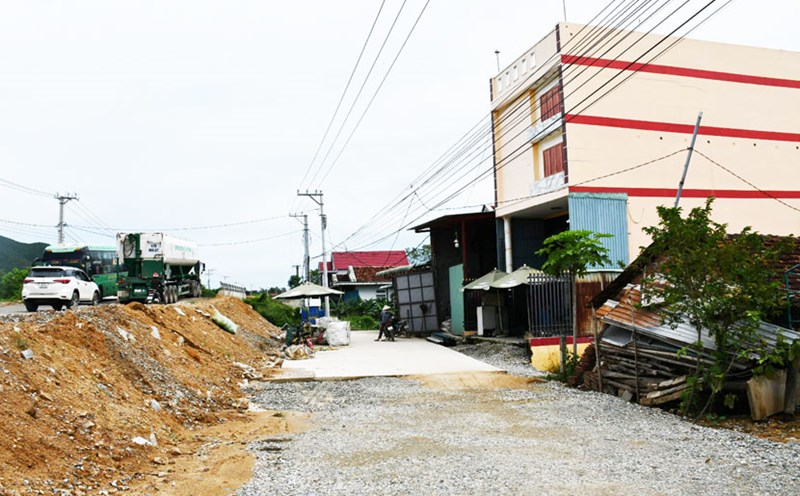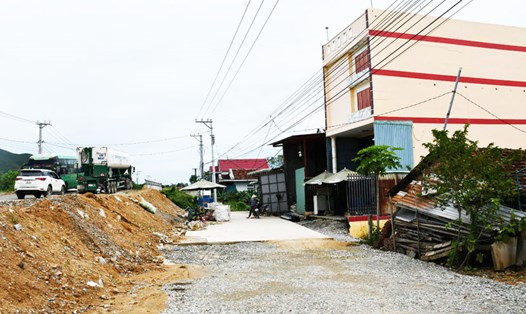"Increase troops, change generals", promised to finish by November
The slow progress of the project to enhance traffic connectivity in the Central Highlands (upgrading and expanding National Highway 19) has put a lot of pressure on the community. Construction is carried out in small steps, dust is everywhere, and the ground is uneven, turning the artery connecting the North Central Highlands with the Central Coast into a terrifying nightmare for people and vehicles, especially for residents living on both sides of the road. Many times, at the National Assembly forum, elected representatives of the two provinces of Binh Dinh and Gia Lai have harshly questioned the specialized management agencies.
Started in June 2021, the Central Highlands traffic connection project is 143.6km long, with an investment capital of 155.8 million USD, of which 150 million USD is borrowed from the World Bank (WB). After more than 3 years of struggling, 7/8 packages have been completed. The remaining package, XL01, 17km through 2 communes of Tay Thuan, Tay Giang, Tay Son district, Binh Dinh, is the reason why the project had to be extended until the end of December.
In late October, XL01 mobilized people and equipment to speed up progress, making up for the previous "shortage" period. Not only the North-Central-South Infrastructure Construction Joint Stock Company (contractor) but also the investor's representative (Project Management Board 2, Ministry of Transport) also increased key personnel to the site.
Mr. Cao Van Hoa, who took over the "hot seat" to manage the package since September, said: "There are 200 workers and 100 machines of all kinds on duty from Bau Sen bridge to the top of An Khe pass. This is the largest mobilization of resources ever. Of the remaining items, the most complicated is the 300m special intersection on the pass, which requires limited blasting and lowering the road surface height to 6 to 12m. While working and ensuring traffic, the ability to exploit machinery and equipment is limited. The rainy and stormy season has begun again. However, the package will basically be completed in November."
Project manager Le Ngoc Nam confirmed: “The contractor has excavated and filled 449,500m3/451,000m3 of earth and rock. The roadbed is basically finished. C19 asphalt concrete is 15.6km/16.5km.”

The lawsuit is not over yet.
The new National Highway 19, through Ta Giang village, Tay Giang commune, is designed to be 2m higher than the old road surface. Many houses suddenly sink into the deep bottom. Daily life and travel are disrupted. The "distance" from the main road not only causes inconvenience but also affects the value of land under the use rights of households.
Complaints flared up and continued for a long time. One group suddenly… lowered its head to demand support for raising the ground. Another group, no less numerous, protested against the compensation for land clearance. The number of complaints about houses and structures damaged by construction vibrations alone, according to the package's Executive Director Cao Van Hoa, reached 1,085 cases.
Most of the above “sufferers” accepted the results of the damage assessment and compensation plan. However, many continued to complain and obstruct the construction.
Project director Le Ngoc Nam listed the “bottlenecks”: “The gravel grading project at the Bau Sen bridgehead, 8 households objected. The left side of the A2 pier of Bau Sen bridge is “halfway broken” because some households do not accept compensation. The U ditch Km52+460 - Km52+487 (right side of the route) is 27m long and the section Km56+000 - Km56+080 is blocked by 4-5 households. The section Km56+540 - Km58+480 cannot be paved with C12.5 asphalt concrete because 86 households have not agreed on the results of the house crack assessment.”
Vice Chairman of the People's Committee of Tay Son District, Binh Dinh Province, Nguyen Van Khanh, said: “The district has handed over the land for the main road and the service road. The compensation price has been widely publicized. Working groups are present in the “sensitive” areas every day. I even know the faces and names of each complaint case. We have applied all the content that can support the people. Flexibility but must be within the policy framework. For example, there is no regulation on supporting ground elevation”!
“Time is running out for the project. We are still persistent in dialogue. If persuasion fails and the obstruction continues, the government will be forced to apply measures to protect the construction and will have no other choice,” said Mr. Khanh.











